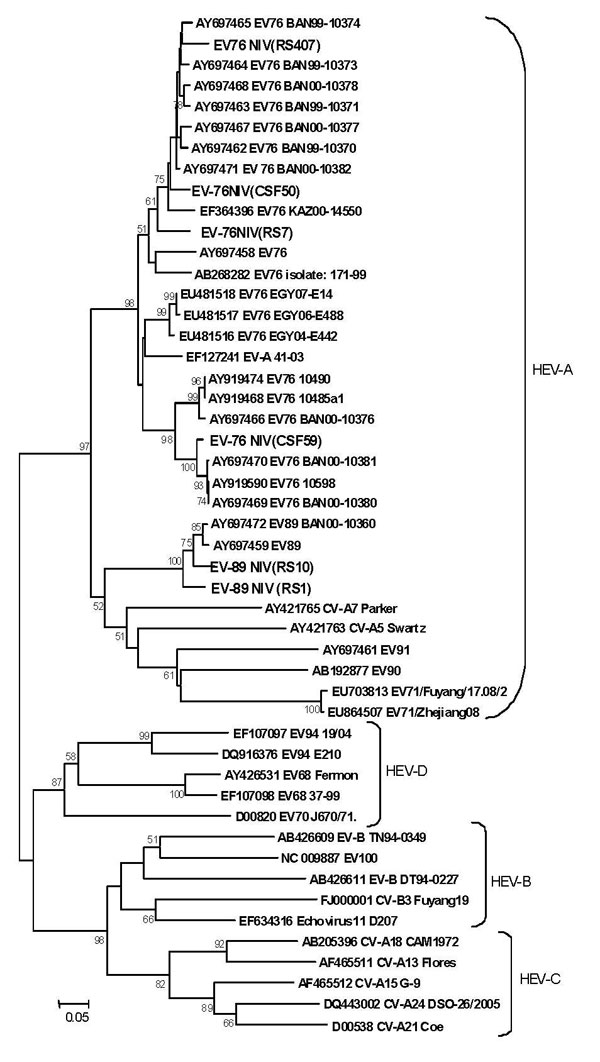Volume 15, Number 2—February 2009
Dispatch
Enteroviruses in Patients with Acute Encephalitis, Uttar Pradesh, India
Figure 2

Figure 2. Phylogenetic tree based on partial virion protein 1 (VP1) sequences (2602–2977) detected in enterovirus (EV) isolates and clinical specimens from encephalitis patients. GenBank accession nos. indicate the nucleotide sequences of EV strains of the present study. Scale bar indicates nucleotide substitutions per site. EV, enterovirus; CV-A, coxsackie virus A; CV-B, coxsackie virus B; HEV, human enterovirus; NIV, National Institute of Virology, Pune, India.
Page created: December 08, 2010
Page updated: December 08, 2010
Page reviewed: December 08, 2010
The conclusions, findings, and opinions expressed by authors contributing to this journal do not necessarily reflect the official position of the U.S. Department of Health and Human Services, the Public Health Service, the Centers for Disease Control and Prevention, or the authors' affiliated institutions. Use of trade names is for identification only and does not imply endorsement by any of the groups named above.